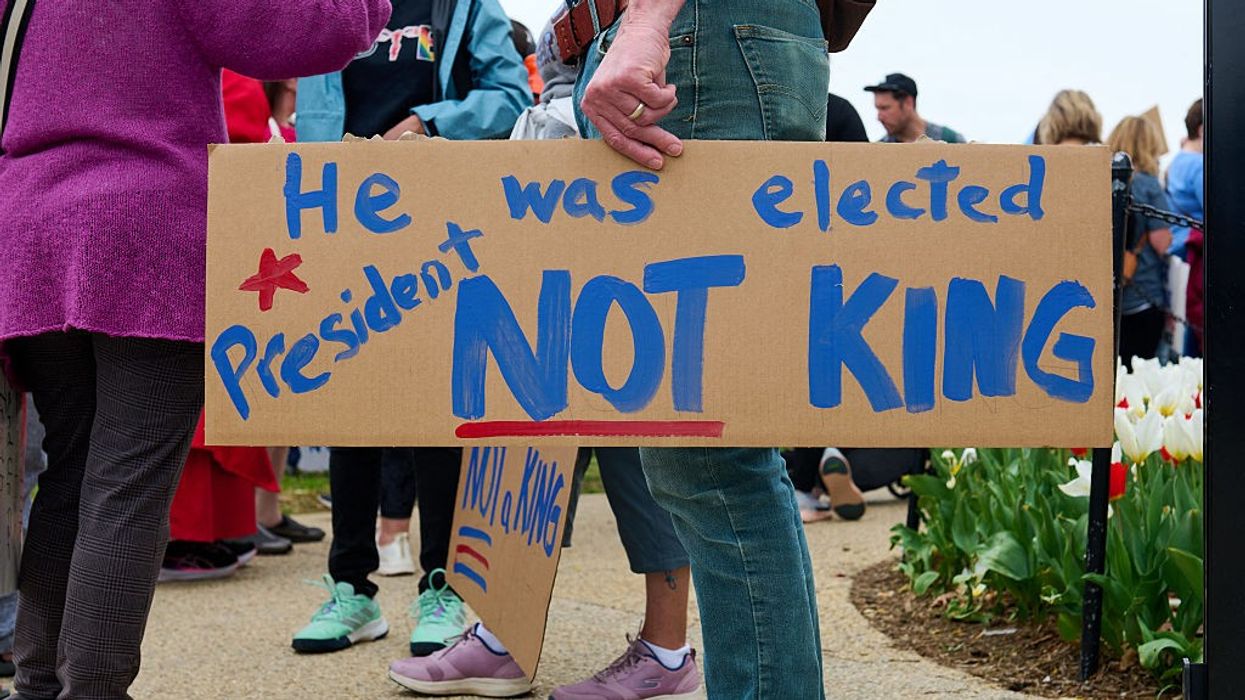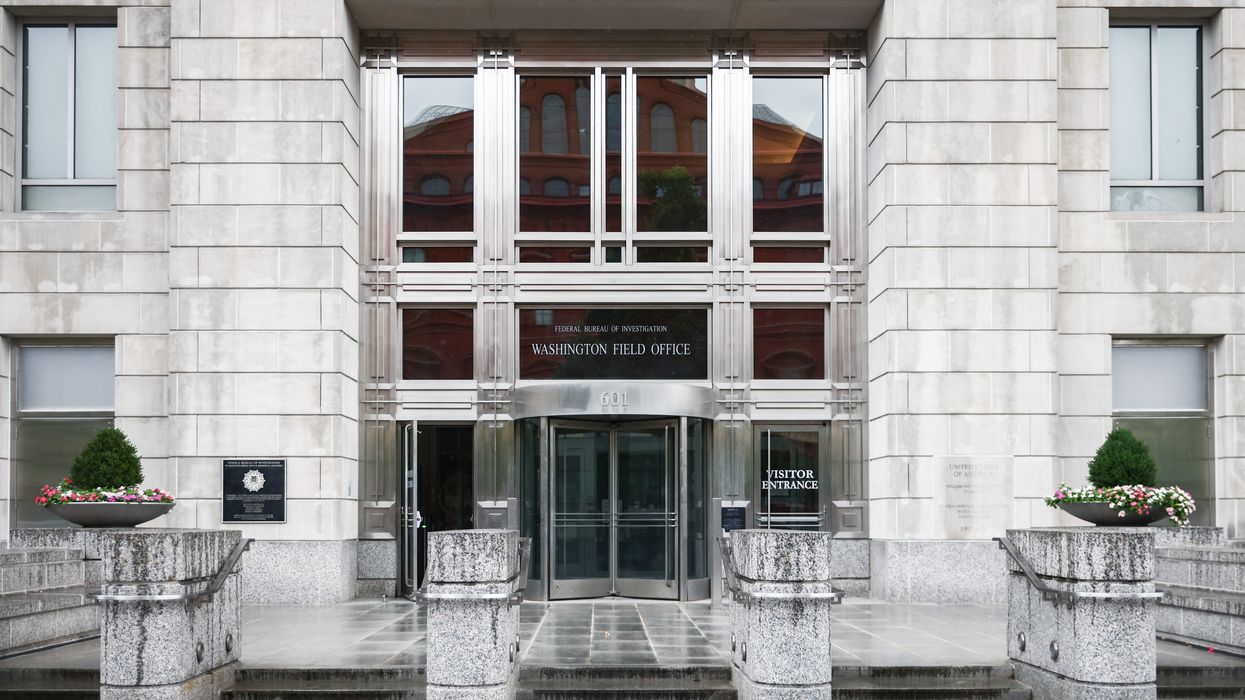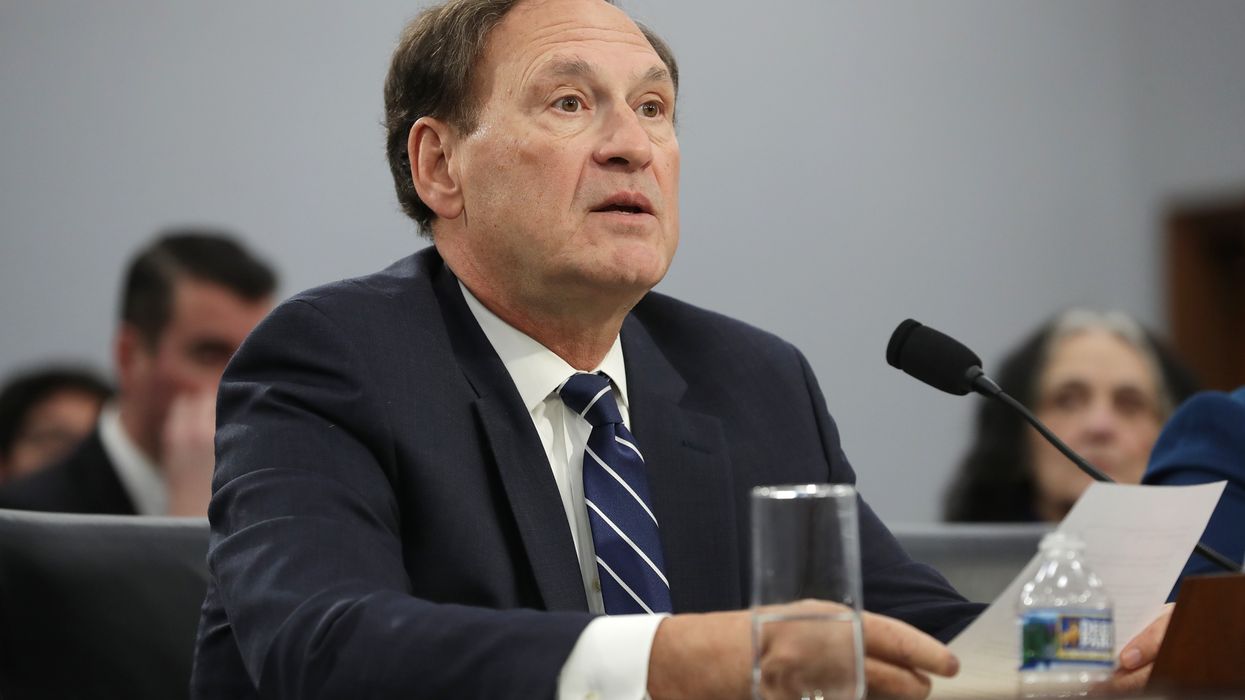Trump Is No King—He's More Dangerous Than That
And yet, as he was elected by the people, we need no revolution to overthrow him. What we must do is reclaim democracy for the common good and put back together what the MAGA movement has smashed.
Donald Trump seems to think he is a king.
On June 14, I joined with citizens across the country to loudly declare “No Kings!
At the same time, Trump is not a king. For while he inherited great wealth, he did not inherit the political power he now wields with such cruelty and contempt for the law.
Trump, alas, is the elected President of the United States.
Well over 77 million citizens voted for him, after experiencing his Covid response, his two impeachments, his civil and criminal convictions, and his failed administration. After all that, those millions of our fellow citizens elected him to the highest office in the country for a second time.
As we celebrate this July 4, it is important to emphasize the ways that Trump’s presidency stands as an affront and a danger to those core values of the Declaration that have long animated democratic struggles...
Trump is indeed much more dangerous than any monarch, precisely because he was elected after a multi-year campaign (kings do not campaign) that consisted of angry rhetoric and violent incitement and very clear promises to do exactly what he is now doing, a campaign that generated substantial popular support and even enthusiasm. There is something paradoxical about this: claiming to represent “We the People,” Trump is laying waste to the foundations of the very constitutional democracy that authorizes his power—much like dictators of the past, including Mussolini and Hitler, did a century ago, and Viktor Orban and Recep Tayyip Erdoğan do today.
The U.S. was not a constitutional democracy in 1776. But it became one, over time, because of the struggles of social movements that regarded the Declaration of Independence as “a charter of liberty” and sought to make real its promise—to secure human rights for all, and a government legitimated by popular consent. A nation, as Lincoln famously put it, “dedicated to the proposition that all men are created equal,” and challenged to sustain “government of the people, by the people, and for the people.”
As we celebrate this July 4, it is important to emphasize the ways that Trump’s presidency stands as an affront and a danger to those core values of the Declaration that have long animated democratic struggles—which makes it all the more galling that he continues to insist that he, along with his recently reinstated “1776 Commission,” is its chief defender.
The rhetoric of popular revolt or revolution is misleading precisely because Trump is a democratically elected president and is neither a king nor a dictator—at least not yet.
On June 14, I nodded approvingly as I heard fellow demonstrators rightly invoke the liberatory rhetoric of the Declaration’s Preamble. But I blanched when this line was loudly repeated as a call to action: “whenever any Form of Government becomes destructive of these Ends, it is the Right of the People to alter or to abolish it, and to institute new Government, laying its Foundation on such Principles, and organizing its Powers in such Form, as to them shall seem most likely to effect their Safety and Happiness.”
I bow to no one in my opposition to Trump, and I truly want to see him gone as soon as possible. Given his administration’s rapid-fire assaults on liberal democracy, I fully appreciate the mobilizational power of those “No Kings” appeals to the rhetoric of popular revolt. And it must be stated: those who embrace this rhetoric do so only rhetorically; it is not anywhere accompanied by incitements to violence or calls to insurrection.
At the same time, the rhetoric of popular revolt or revolution is misleading precisely because Trump is a democratically elected president and is neither a king nor a dictator—at least not yet. Trump is what historians call a “conservative revolutionary.” Seeking to destroy the progressive achievements of past decades, and to restore a mythic lost “greatness,” it is he who seeks to alter or abolish the current political system, and it is we who must prevent him from succeeding, by defending constitutional democracy, whatever its deficiencies.
Recall that the January 6, 2021 insurrection was justified as a second American Revolution. On that morning, MAGA Congresswoman Lauren Boebert ttweeted “Today is 1776.” Congressman Jody Hice followed a few hours later, tweeting “this is our 1776 moment.” The rallying cry was heard. And, led by Proud Boys and Three Percenters cosplaying the Minutemen of Lexington and Concord, the “patriotic” mob descended upon the Capitol, doing their part to prevent “Biden the Usurper” from becoming president. Days later, the Philadelphia Inquirer profiled Jim Sinclair, a 38-year-old home restoration contractor from Bensalem, Pennsylvania, who traveled to Washington to participate in the “Stop the Steal” march. “Freedom!!!!!!!” Sinclair posted on Facebook. “It’s 1776, the American people have ears and eyes,” he declared. “We will not accept this fraudulent election.” Politico reported that online social media traffic among extremists in the lead-up to the insurrection frequently alluded to the precedent of 1776.
This is the rhetoric of civil war. And it attacks the fundamental premise of our constitutional democracy—the legitimacy of political contestation.
Also recall that the highbrow conservative luminaries from Hillsdale College and the Claremont Institute who comprised Trump’s “1776 Commission” and revere “The Founding Fathers” either directly supported this insurrection or gave it intellectual cover. The “Stop the Steal” movement that powered Trump’s 2024 victory frequently invoked the “spirit of ’76.” Claiming to represent a “resistance” to the supposedly “totalitarian Biden regime,” MAGA ideologues were quite amenable to extra-legal action in the service of “regime change,” in the event that “the Democrat Party” succeeded in 2024. If you doubt this, take a look at Claremont Institute Fellow Kevin Slack’s 2023 book War on the American Republic: How Liberalism Became Despotism, which floats the idea of a new—and very much armed—American Revolution. Discussing the book in The American Mind, a MAGA journal, Claremont fellow Glenn Ellmers dispassionately discusses “Revolutionary Necessity,” quoting Jefferson on “prudence” and gently urging caution because “the regime” would love to crush a revolution, and “one should embark on a revolution only when there is a reasonable expectation, and plan for, a better arrangement.” In other words, you need to really be sure you can succeed before you try to overthrow the “despotism” of liberal democracy.
This is the rhetoric of civil war. And it attacks the fundamental premise of our constitutional democracy—the legitimacy of political contestation. Trump won the 2024 election. And so, instead of taking to the streets—as they might have done had Trump lost—MAGA ideologues, armed with their own revolutionary manifesto, Project 2025, have taken control of the Executive Branch of the federal government. And they are using it to wage war on legal institutions, universities, immigrants both documented and undocumented, sexual minorities, and political critics of all kinds.
This July Fourth, we ought to recall heroes and heroines of the past—Elizabeth Cady Stanton, Frederick Douglass, Eugene V. Debs, Martin Luther King, Jr., and others—who led the fight to realize a robustly democratic vision of the Declaration. And then, using the hard-won civil and political liberties still at our disposal, we ought to rededicate ourselves to winning back political power democratically, so that, in the words of Lincoln, “government of, by, and for the people shall not perish from the earth.” For if the MAGA agenda succeeds, we can say goodbye to civil rights, civil liberties, and democracy itself. It would be a cruel irony indeed if future July 4 celebrations were to become celebrations of the MAGA illiberalism that warms Donald Trump’s shriveled heart.


